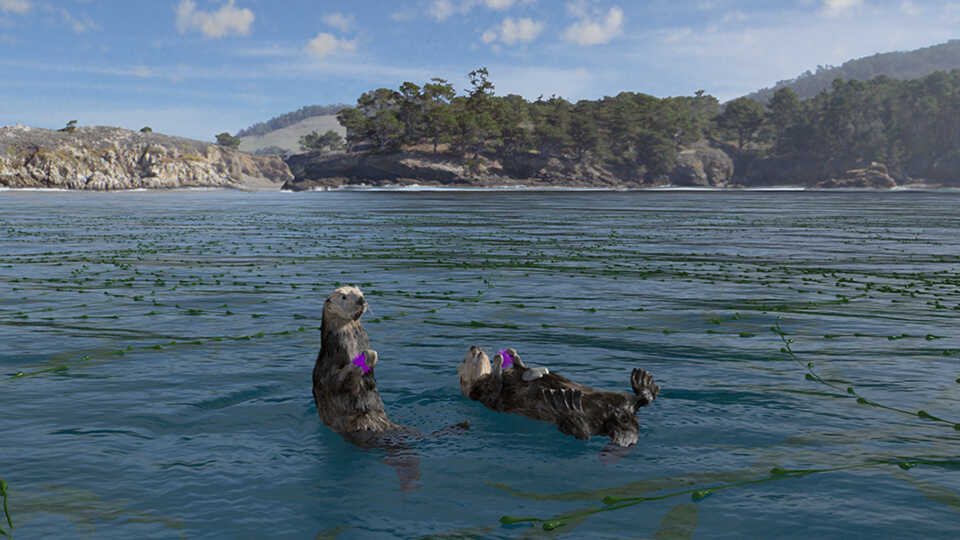Free suite of lessons and videos allows educators to dive into immersive environmental content

San Francisco (October 28, 2015) – Students and educators around the country can now enjoy an immersive, world-class planetarium experience for free without leaving the classroom. The California Academy of Sciences has recently launched a new suite of classroom materials based on the museum’s award-winning planetarium show Habitat Earth. Designed to provide sustainability-focused science education to youth in grades 3-12, the content has already reached nearly 20,000 students nationwide since its original pilot launch in August 2015. Through rich, digital experiences, the Academy seeks to make complex science topics easily accessible for educators and compelling for students. The new materials include comprehensive educator guides, video lessons, and collaborative activities. In addition, every classroom has access to a full-length copy of Habitat Earth, making this the first planetarium production the Academy has distributed for free educational use.
“We’re thrilled to connect classrooms with critical science topics such as biodiversity, sustainability, and ecology through these engaging new materials,” says Dr. Elizabeth Babcock, the Academy’s Chief Public Engagement Officer and Roberts-Wilson Dean of Education. “Teachers are asking for visually compelling, science-rich materials that will allow students to create models, understand systems, and ask questions about stability and change on our planet. The Academy is delighted to be able to provide these resources, leveraging our scientific and educational expertise.”
The 25-minute production takes viewers on a journey through the vast networks of life on Earth and the often surprising ways that human and ecological networks intersect—all within a classroom-friendly timeframe. Short video supplements allow educators to study key themes and ideas explored in the show, taking a closer look at photosynthesis from space, the busy microscopic world within soil, how ships carry invasive species across global waters while connecting human societies around the world, and more. Each video clip comes with complementary lesson plans and additional suggested resources for educators and students to dive deeper into these important environmental topics.
“With each planetarium production, the Academy’s science visualization team seeks to translate complex data into a visually stunning experience that both entertains and educates viewers,” says Ryan Wyatt, the Academy’s Director of Morrison Planetarium and Science Visualization. “By sharing this production with classrooms, we hope to provide educators with a new way to deliver and teach science—and to inspire youth by exposing them to new methods of learning about and engaging with the world around them.”
Educators who have used the materials in their classrooms have experienced firsthand the positive impact this immersive content has on connecting students with science in a way that is relevant to their lives. When asked about the value of these materials to their curriculum, educators said that, “the materials are extremely high-quality and highly relevant for our times” and “a great way to visualize the interactions between organisms in the ecosystem and ignite compassion for the environment in young learners.”
Aligned with Next Generation Science Standards, this collaboration between Academy educators, digital artists, and data visualizers is part of the museum’s Global Environmental Literacy Initiative, made possible through a transformative grant from the Pisces Foundation. This generous grant allows the Academy to accelerate the development and increase the global reach of its critical ecoliteracy programs.
About Education at the California Academy of Sciences
The California Academy of Sciences is an innovative leader in efforts to increase scientific and environmental literacy worldwide. Based in San Francisco, the Academy is home to 170 science educators and communicators as well as more than 300 highly trained docents who engage people of all ages—both here in California and around the world—in the scientific concepts and issues that will shape our future. Through intensive partnerships with schools and teachers, innovative programs and exhibits for all ages, engaging online learning and digital media offerings, and immersive science visualization productions, Academy educators increase the public’s understanding and appreciation of the natural world and inspire participants to help sustain the rich diversity of life on Earth.
Press Contacts
If you are a journalist and would like to receive Academy press releases please contact press@calacademy.org.
Digital Assets
Hi-res and low-res image downloads are available for editorial use. Contact us at press@calacademy.org to request access.